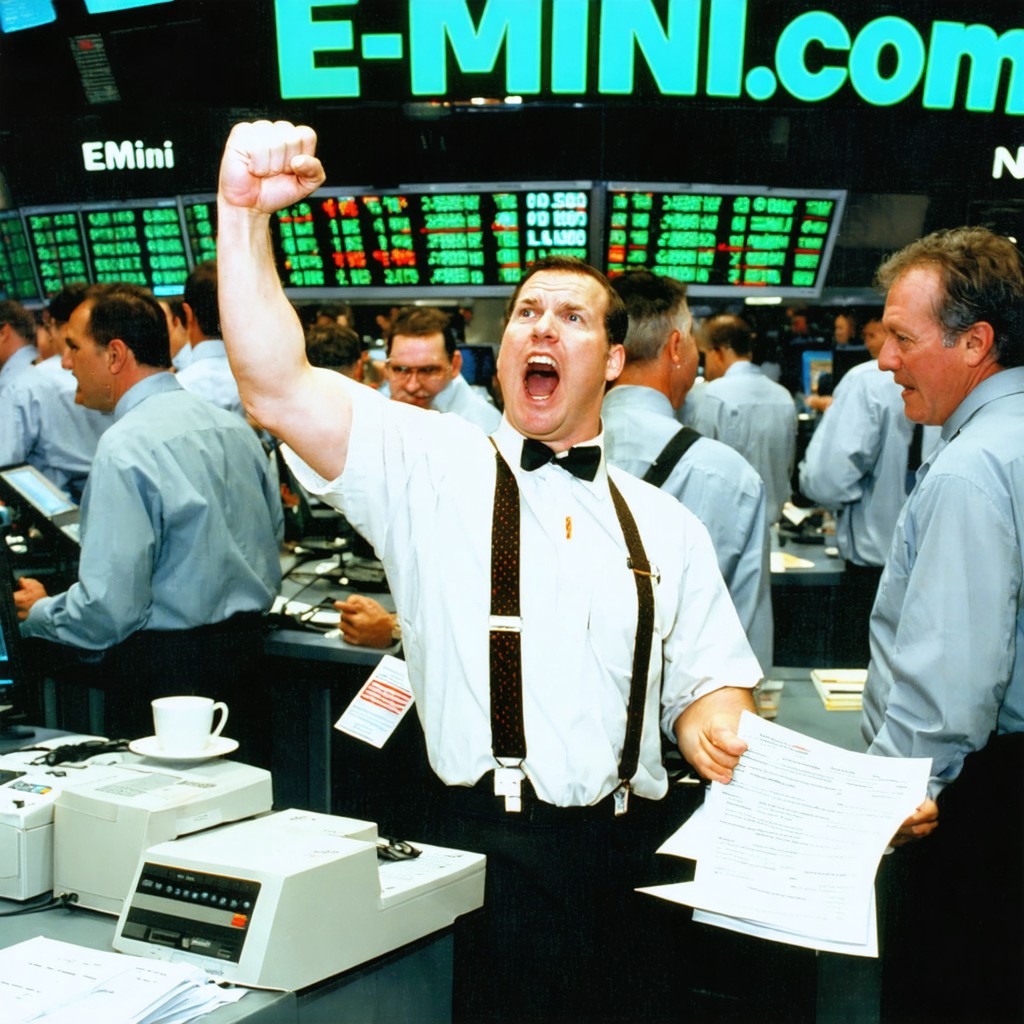The Nasdaq 100 futures contract represents an agreement to buy or sell the Nasdaq 100 Index at a future date, often traded in electronic formats through exchanges such as the CME Group. These contracts, including the popular E-mini Nasdaq futures and Micro E-mini Nasdaq futures, allow traders and investors to gain exposure to the performance of the top 100 largest non-financial companies listed on the Nasdaq stock exchange. These companies span multiple sectors but are particularly weighted in technology, making Nasdaq 100 futures an attractive product for those interested in tech stocks and high-growth companies.
Components of the Nasdaq 100 Index
The Futures for Nasdaq 100 Index includes 100 of the largest domestic and international non-financial companies by market capitalization. While the majority of the index is technology-driven, it also includes companies from consumer services, healthcare, telecommunications, and industrial sectors. The index is highly concentrated in a few key technology stocks, often referred to as the FAANG stocks—Facebook (Meta Platforms), Apple, Amazon, Netflix, and Google (Alphabet)—which, along with companies like Microsoft, Nvidia, and Tesla, have a substantial influence on the overall performance of the Nasdaq 100.
Why Trade Nasdaq 100 Futures?
Nasdaq 100 futures provide several advantages to traders and investors, making them an essential part of financial markets. Below are the key reasons to trade Nasdaq 100 futures:
- Leverage: Futures contracts allow traders to control a large position with a small initial margin. This makes Nasdaq 100 futures highly capital-efficient compared to directly buying the underlying stocks. However, this leverage also amplifies risk, meaning traders need to be mindful of their position size and margin requirements.
- Liquidity: Nasdaq 100 futures are among the most liquid equity index futures globally. High liquidity ensures that traders can enter and exit positions quickly with minimal slippage, an essential factor for both short-term traders and long-term investors. This liquidity also contributes to tighter bid-ask spreads, making it a cost-effective product to trade.
- Diversification: With just one futures contract, a trader gains exposure to the performance of 100 large companies. This diversification reduces the impact of any single stock’s volatility on the trader’s portfolio, creating a more stable trading instrument than investing in individual stocks within the Nasdaq index.
- Round-the-clock trading: Unlike regular stock markets, which have set trading hours, Nasdaq 100 futures trade almost 24 hours a day. This allows traders to react to news events and global market movements outside of standard trading hours. This feature is especially valuable for traders looking to manage risk or capitalize on opportunities that arise from international market trends or unexpected news.
- Hedging: Nasdaq 100 futures offer a flexible and cost-efficient tool for hedging a portfolio of technology stocks or broader market risk. Investors holding positions in large-cap tech stocks, or ETFs that mimic the Nasdaq 100 index, can use futures contracts to hedge against potential declines in the market without having to liquidate their holdings.
- Speculation: For traders looking to profit from price movements, Nasdaq 100 futures provide an efficient avenue for speculation. Given the inherent volatility of technology stocks, the Nasdaq 100 index experiences significant price swings, which present opportunities for those who can accurately predict short-term market movements.
Types of Nasdaq 100 Futures Contracts
- E-mini Nasdaq 100 Futures
One of the most widely traded futures contracts, the E-mini Nasdaq 100 futures (ticker: NQ), offers significant exposure to the index with a relatively low margin requirement compared to the full-size Nasdaq futures contract. Each E-mini Nasdaq 100 futures contract represents a value equal to 20 times the Nasdaq 100 index. For example, if the Nasdaq 100 index is trading at 15,000, the notional value of one E-mini contract is $300,000. E-mini contracts are commonly used by both retail traders and institutional investors due to their liquidity and ease of access.
- Micro E-mini Nasdaq 100 Futures
The Micro E-mini Nasdaq 100 futures (ticker: MNQ) is an even smaller-sized contract designed for retail traders and those with smaller accounts. The Micro E-mini contract is one-tenth the size of an E-mini Nasdaq 100 contract, offering a more accessible way to trade Nasdaq 100 futures. This smaller contract size allows traders to control risk more effectively by trading smaller increments while still benefiting from the leverage and flexibility that futures provide.
Who Trades Nasdaq 100 Futures?
Nasdaq 100 futures attract a wide range of participants, from individual retail traders to large institutional investors. Below are the key groups of market participants involved in trading these futures:
- Speculators: These are traders who attempt to profit from price fluctuations in the Nasdaq 100 index. They use futures contracts to take directional positions, either long (betting the index will rise) or short (betting the index will fall). Speculators often include day traders, swing traders, and algorithmic traders who aim to capitalize on short-term market movements.
- Hedgers: Institutional investors and portfolio managers often use Nasdaq 100 futures to hedge their exposure to large-cap tech stocks or other risk assets. By taking an opposite position in the futures market, they can protect their portfolios from downside risk without having to sell their underlying assets.
- Arbitrageurs: Arbitrageurs take advantage of pricing discrepancies between Nasdaq 100 futures, the underlying index, and related products like exchange-traded funds (ETFs). They aim to profit from these small price differences, ensuring that the futures price remains aligned with the fair value of the index.
- Market makers and liquidity providers: These participants play a crucial role in maintaining liquidity in the futures market. They quote bid and ask prices for futures contracts and profit from the spread between these prices while facilitating smoother transactions for all market participants.
Hedging with Nasdaq 100 Futures
Hedging is a risk management strategy that involves taking an offsetting position in a related asset to protect against adverse price movements. Nasdaq 100 futures are often used to hedge portfolios that have significant exposure to technology stocks or ETFs tracking the Nasdaq 100 index. Here’s how it works:
- Portfolio hedging: Suppose an investor has a long position in multiple tech stocks that mirror the Nasdaq 100 index. If the investor anticipates a short-term market downturn, they can sell Nasdaq 100 futures contracts to hedge against potential losses. If the market declines, the losses on the underlying stocks will be offset by gains on the short futures position.
- Hedging with E-mini contracts: A portfolio with a notional value of $600,000 (representing a basket of tech stocks) can be hedged using two E-mini Nasdaq 100 futures contracts, assuming the index is trading at 15,000 (making the notional value of one contract $300,000). By shorting two E-mini contracts, the portfolio is effectively hedged against a decline in the index.
- Micro E-mini for precision hedging: Smaller portfolios can use Micro E-mini Nasdaq 100 futures for more precise hedging. Because each Micro E-mini contract is just one-tenth the size of an E-mini contract, investors can hedge smaller increments, which is useful for retail traders or those with more modestly sized portfolios.
Arbitrage Opportunities in Nasdaq 100 Futures
Arbitrage is the practice of exploiting price differences between two or more related markets to make a profit. In the context of Nasdaq 100 futures, there are various types of arbitrage opportunities:
- Index arbitrage: Index arbitrage involves trading between the Nasdaq 100 futures contract and the actual index, or related instruments like ETFs. For example, if the futures price diverges from the underlying index price, traders can simultaneously buy the underpriced asset and sell the overpriced one. As the prices converge, the arbitrageur profits from the difference.
- Calendar spread arbitrage: This strategy involves taking opposite positions in Nasdaq 100 futures contracts with different expiration dates. If the spread between two contracts (e.g., the June and September contracts) is mispriced relative to historical norms, an arbitrageur can exploit the difference by buying one contract and selling the other, hoping to profit as the spread returns to normal levels.
- Cross-market arbitrage: Nasdaq 100 futures contracts can also be arbitraged against related products in other markets, such as ETFs or options. For instance, if the price of the Invesco QQQ ETF, which tracks the Nasdaq 100 index, diverges from the futures price, an arbitrageur can short the overpriced asset and go long on the underpriced one to profit from the convergence.
- Statistical arbitrage: Statistical arbitrage relies on mathematical models to identify pricing inefficiencies between Nasdaq 100 futures contracts and other assets. This form of arbitrage uses historical correlations and patterns to predict when mispricing will occur and implements trades accordingly.
The Nasdaq 100 futures contract is a versatile financial instrument that provides traders with opportunities for speculation, hedging, and arbitrage. With options such as the E-mini Nasdaq futures and Micro E-mini Nasdaq futures, market participants can access the technology-driven Nasdaq 100 index with different levels of capital. These futures products offer advantages such as leverage, liquidity, and round-the-clock trading, making them suitable for a wide range of market participants—from individual retail traders to large institutional investors.
For those looking to hedge a portfolio of tech stocks, Nasdaq 100 futures offer an efficient way to manage risk without having to sell the underlying assets. Moreover, arbitrageurs can capitalize on pricing discrepancies between Nasdaq 100 futures and related markets, contributing to market efficiency.
Whether you are a short-term speculator, a long-term investor, or an arbitrageur, the Nasdaq 100 futures provide a dynamic and powerful tool for navigating the fast-paced and volatile world of equity markets.
To open a futures account with E-Mini.com, please click here.
Top of FormReady to start trading futures? Call US 1(800)454-9572 – Int’l (310)859-9572 email info@cannontrading.com and speak to one of our experienced, Series-3 licensed futures brokers and start your futures trading journey with E-Mini.com today.
Disclaimer – Trading Futures, Options on Futures, and retail off-exchange foreign currency transactions involves substantial risk of loss and is not suitable for all investors. Past performance is not indicative of future results. You should carefully consider whether trading is suitable for you in light of your circumstances, knowledge, and financial resources. You may lose all or more of your initial investment. Opinions, market data, and recommendations are subject to change at any time.
Important: Trading commodity futures and options involves a substantial risk of loss. The recommendations contained in this writing are of opinion only and do not guarantee any profits. This writing is for educational purposes. Past performances are not necessarily indicative of future results.
**This article has been generated with the help of AI Technology. It has been modified from the original draft for accuracy and compliance.
***@cannontrading on all socials.







